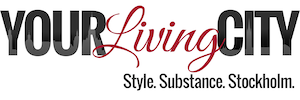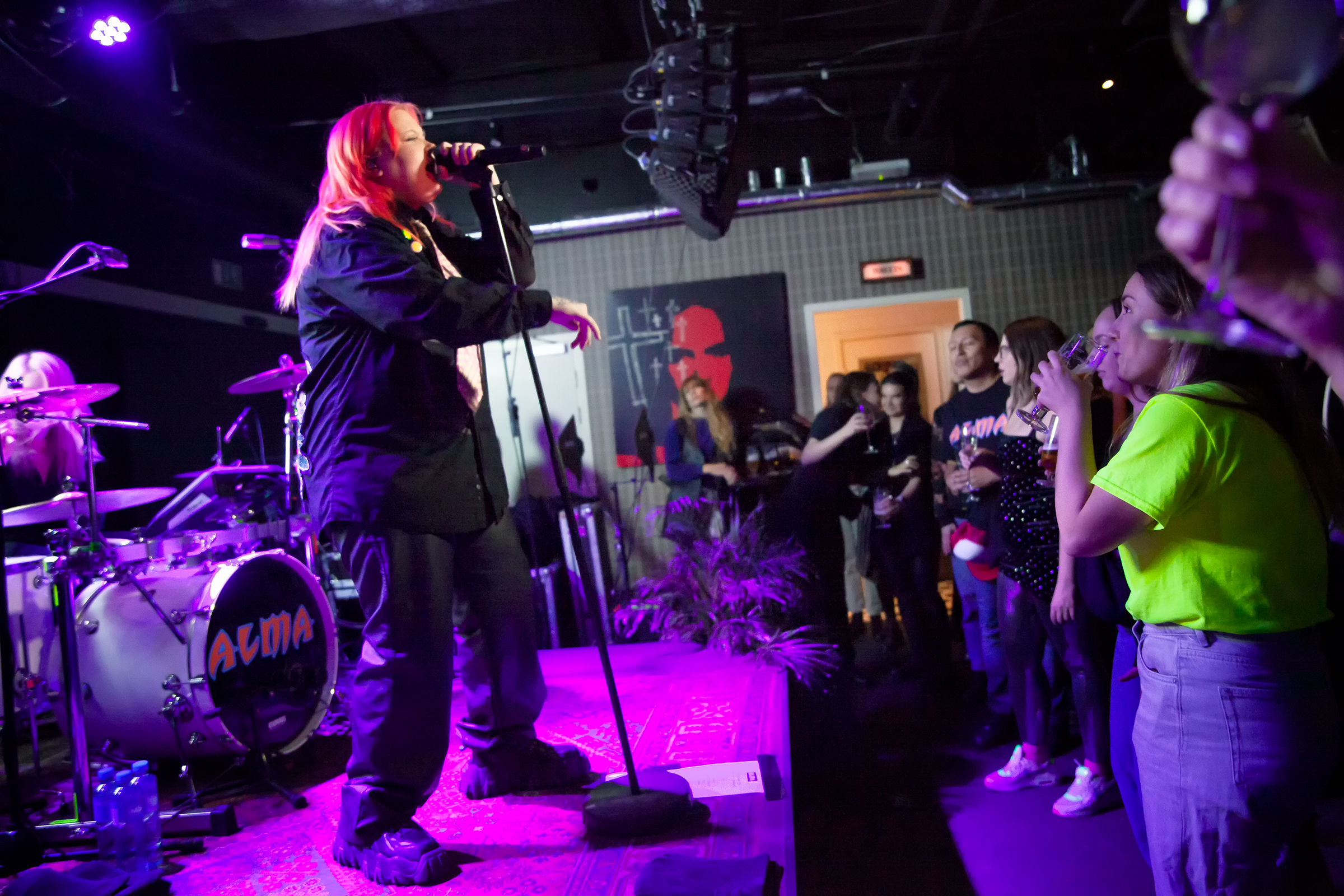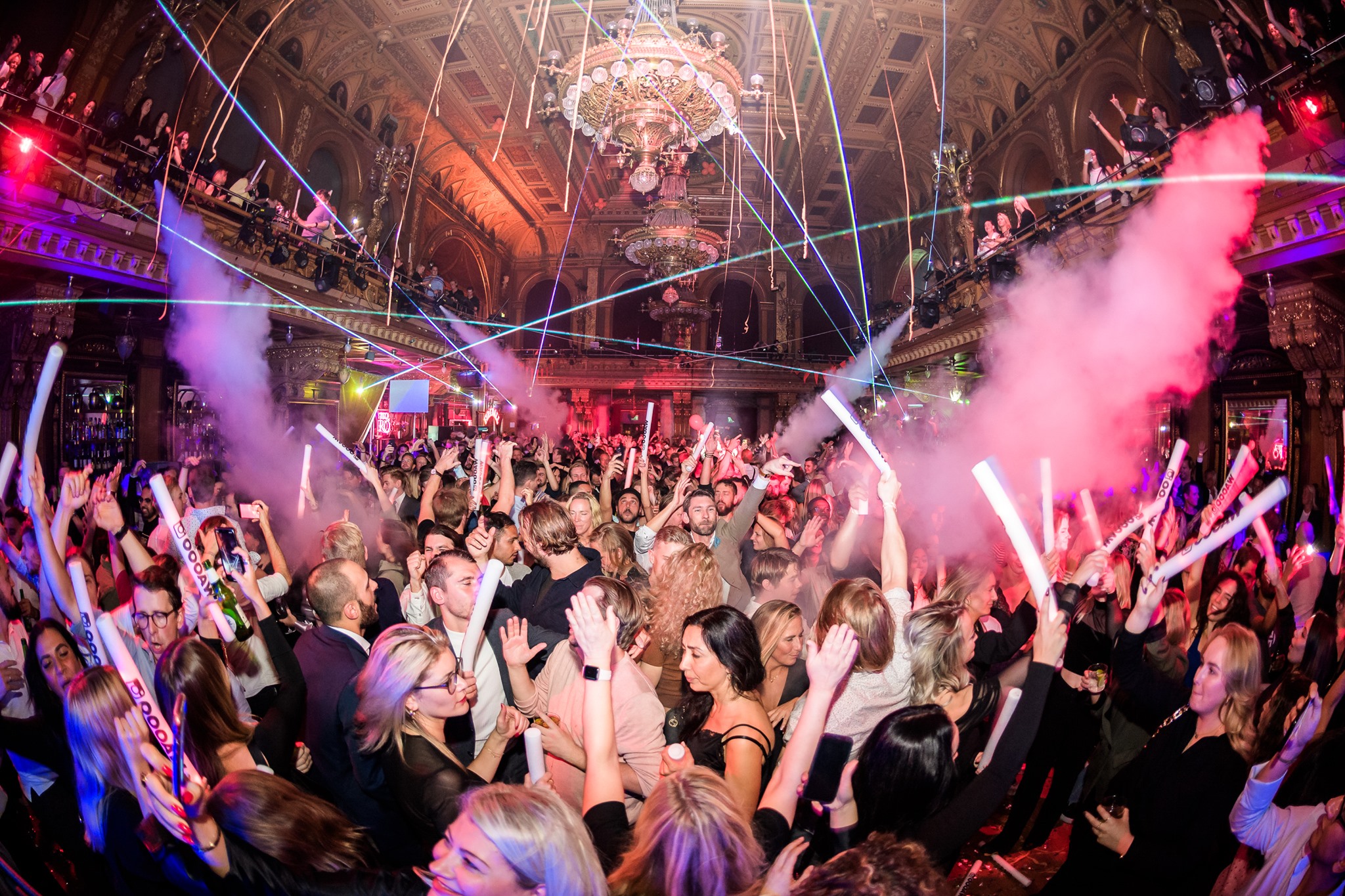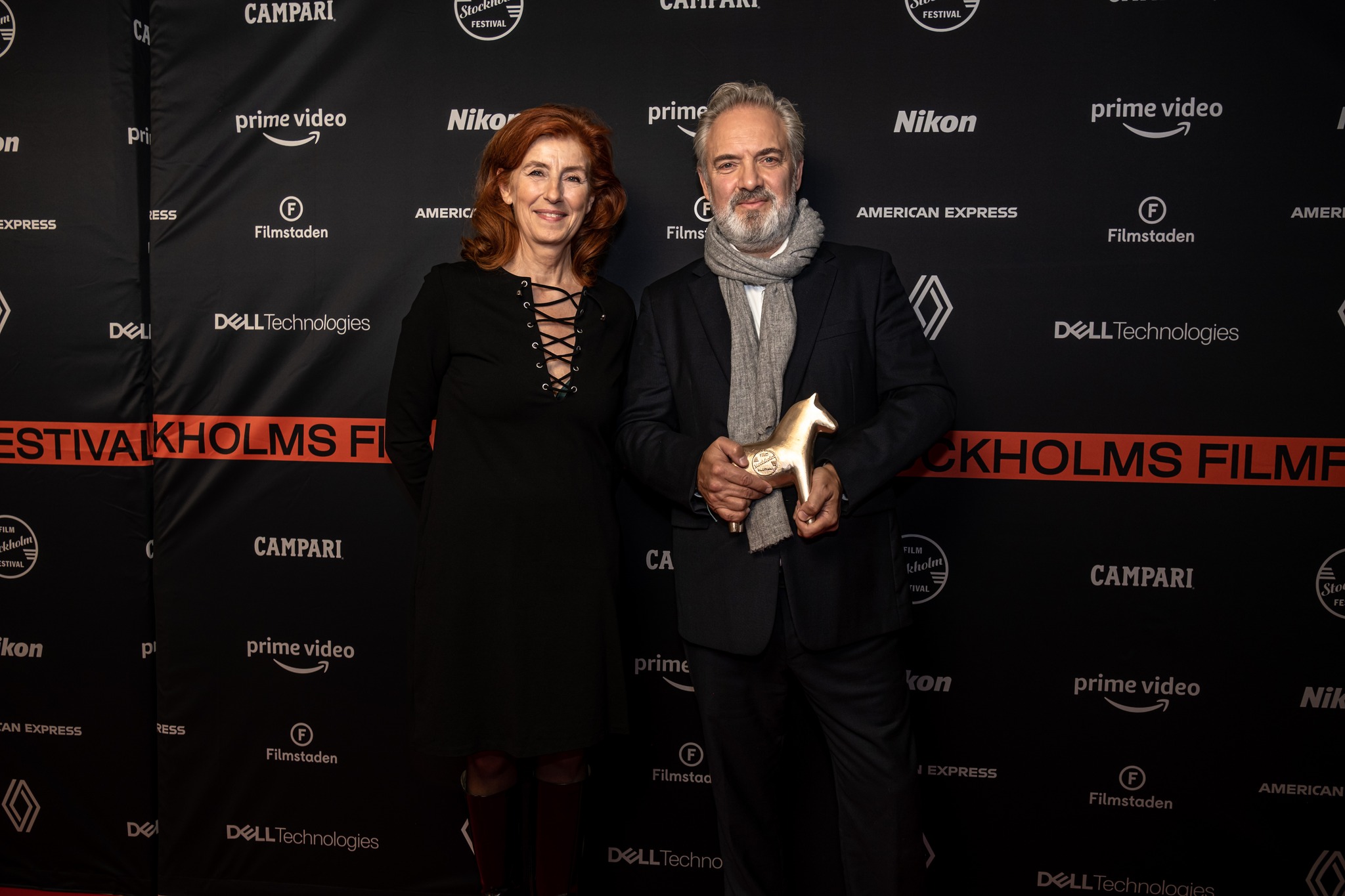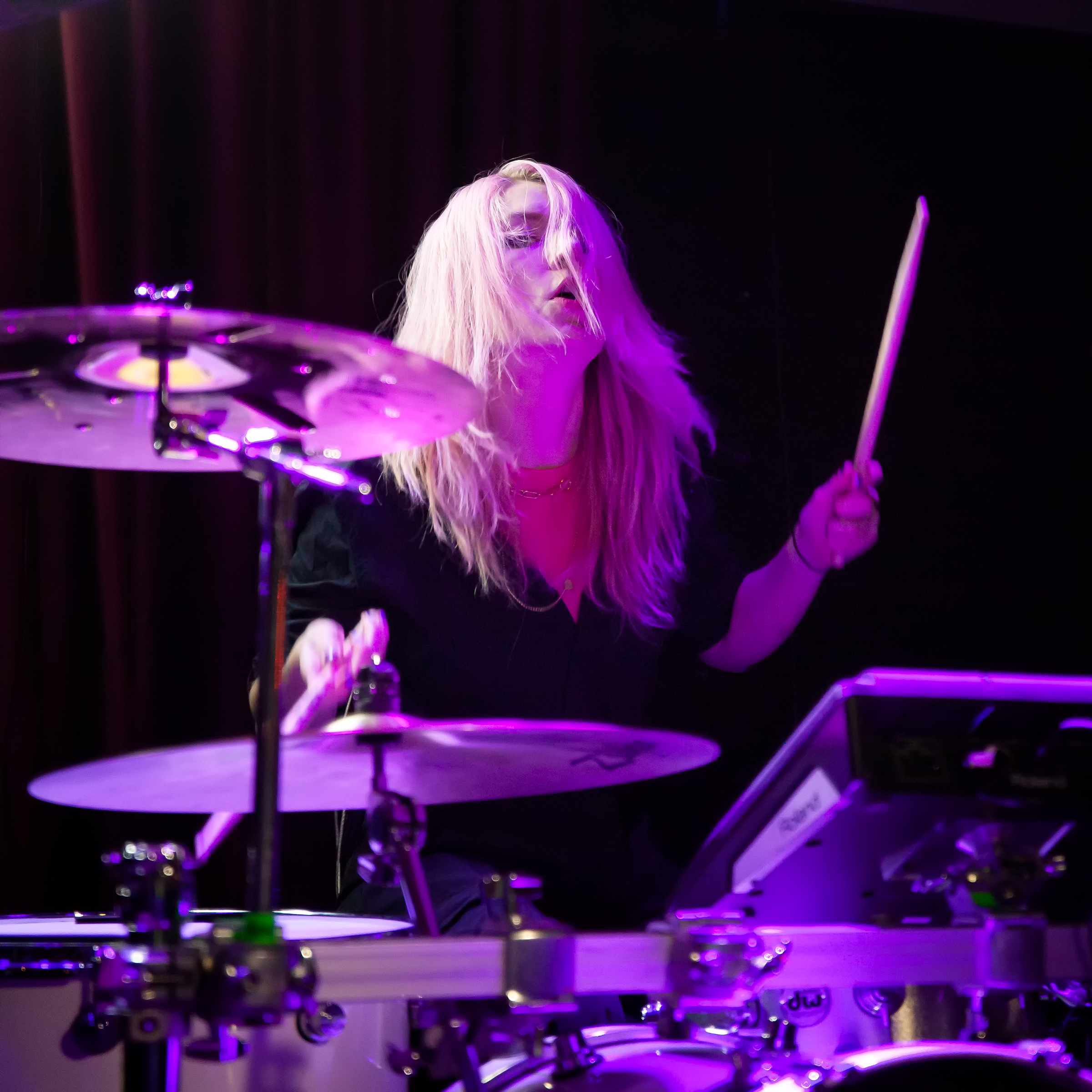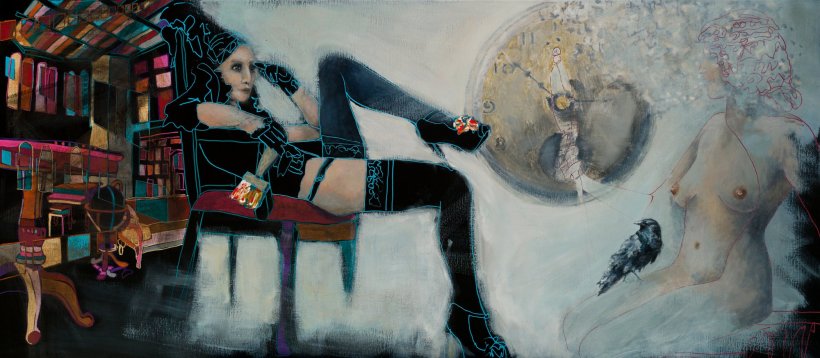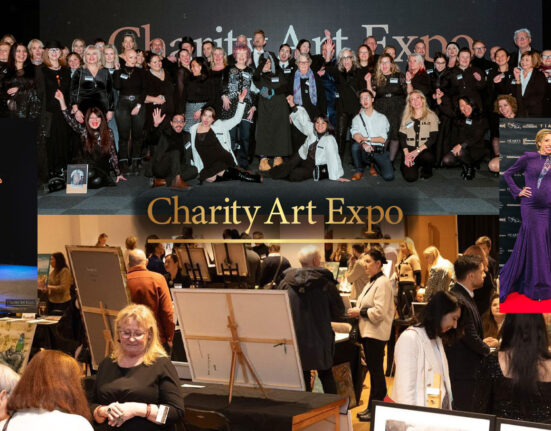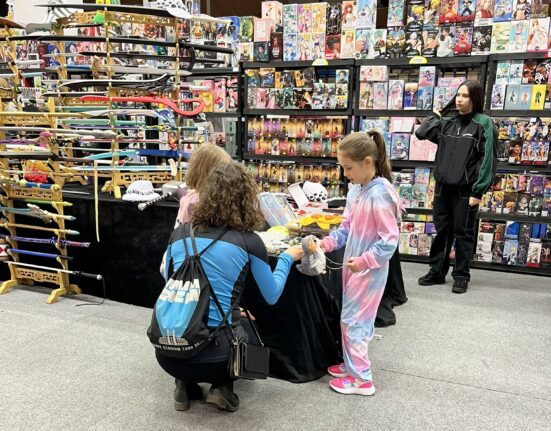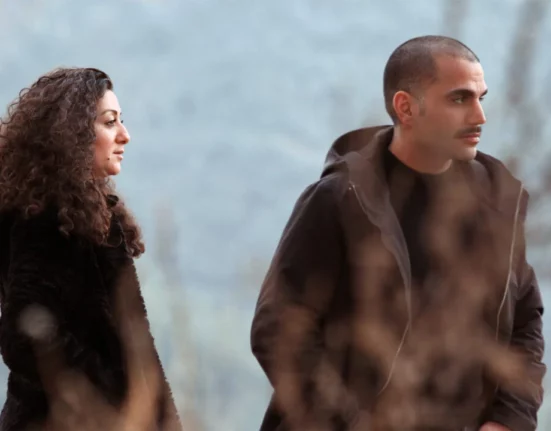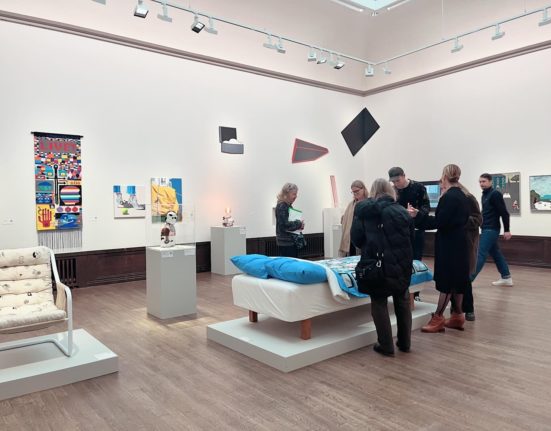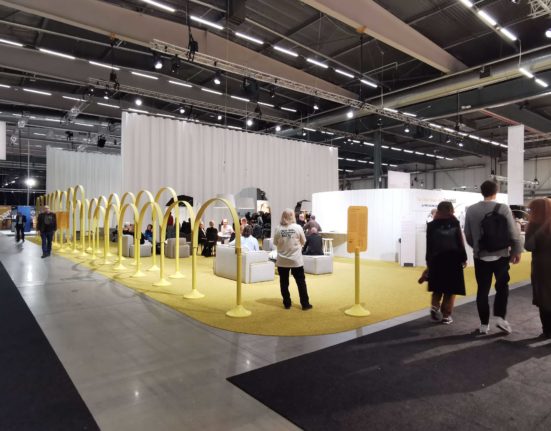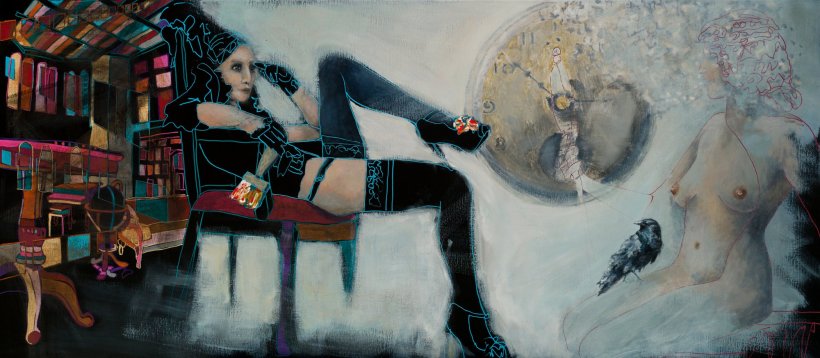
Life – abundantly experienced, insightfully perceived and questioned, or creatively imagined – becomes the myriad bases for soulful artistic contemplation and thus, solemn elucidation; albeit sometimes with hints of witty re-interpretation.
These whiffs of fresh air are as necessary as art inspirationally birthed by the pure, the novel, the wondrous – like the brilliant rainbows after a spring shower, they hold the promised silver linings that insistently thread through the ominously thunderous storms.
Viewing both genres of art fortuitously reinvigorates our hope and hence optimism; balancing our outlooks as we journey through the Yin and Yang of living.
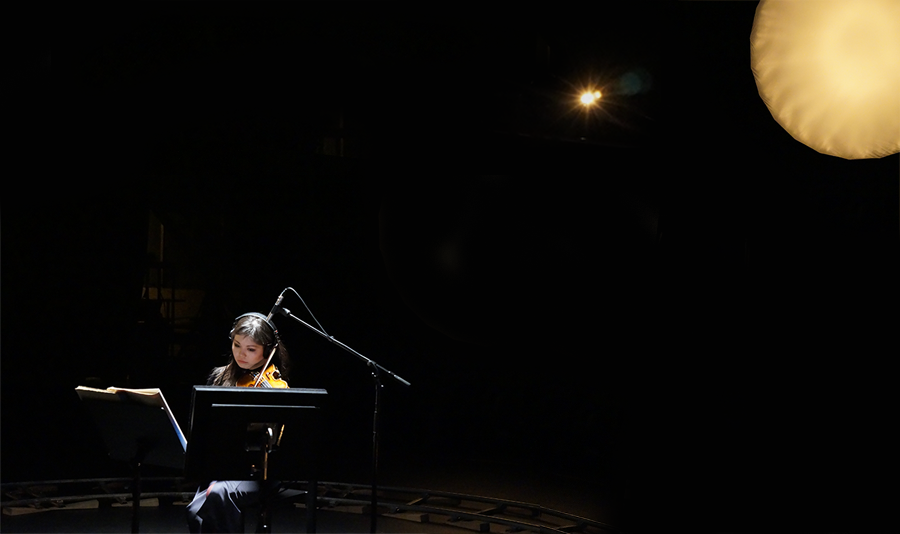
Artist: Susan Philipsz
Exhibition: Lost in Space
Where: Bonniers Konsthall, Torsgatan 19
When: Till 6 May
Bonniers Konsthall’s 2017 guest artist Susan Philipsz sculpts spatially with sound; using her own voice or a variety of instrument to create architectural structures of sound in exhibition rooms, visualizing in location a song’s, a production’s or a music composer’s forgotten history, and making distance, loss, longing and hope central motifs.
Originally a sculptor, this Turner Prize winner has over the course of two decades experimented with both the sculptural and spiritual dimensions of sound; evoking an acute awareness of the surrounding space. Hence, her sound installations often find their way outside of the art institution, residing in the public sphere; like railway stations, churchyards, bridges and bodies of water.
For this exhibition, the Berlin-based Scottish-born Philipsz creates a new piece specifically for the Konsthall itself; incorporating the medium of film for the first time, and choosing leading modernist Swedish composer Karl-Birger Blomdahl’s electronically combined jazz, cabaret, hymns and twelve-tone music opera Aniara as her raw material.
Inspired by a poem written by Swedish Nobel laureate Harry Martinson in 1956, Aniara remains relevant to this day as the story concerns the enormous spacecraft Aniara transporting 8,000 people from Earth to Mars and Venus to escape environmental destruction and nuclear war. When Aniara gets incidentally propelled into the uncharted universe, the people trapped on board face the fate of no escape and no plausible rescue.
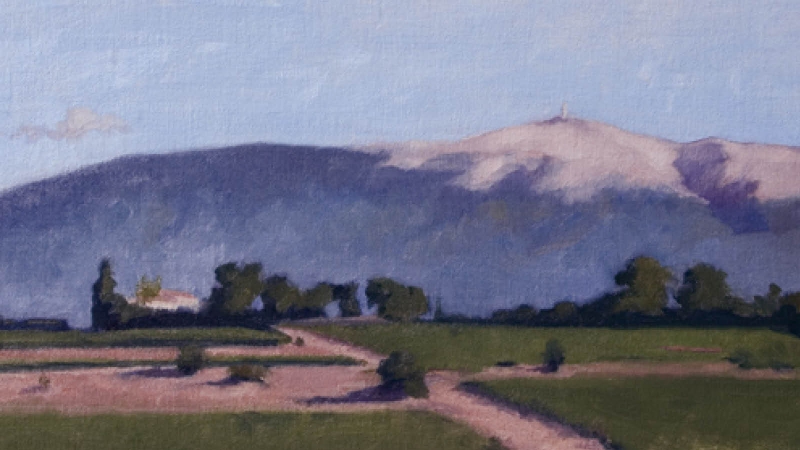
Artist: Urban Larsson
Exhibition: Landscape, Still Life & Portraits
Where: Sven-Harrys Konstmuseum, Eastmansvägen 10–12
When: Till 16 April
An artist is faced with many critical choices; including education, identity and materials. In Urban Larsson’s contemporary practice it is the strong influence by traditional painters. Working in a figurative style while using established, proven and customary elements from previous eras, he turns his back on modernism; creating easel paintings comprising all the classical exercises: nudes, still-lives, plein-air scenes and lifelike portraits of prominent men and women giving us glimpses of their souls – including that of H.M. Queen Silvia of Sweden, housed at Gripsholm Castle as part of the National Museum collection.
While his landscapes are meditative and shimmering, and can be seen as contemporary relatives of Corot’s and Daubigny’s, his still-lives often depict everyday objects in an intimate format, with an intriguing sense of light and darkness, shadows falling softly, never intrusive or frightening.
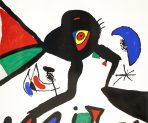
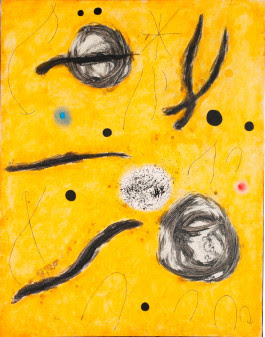
Artist: Joan Miró
Exhibition: Ordinary Life Poetry
Where: Prince Eugen’s Waldemarsudde, Prins Eugens väg 6, Djurgården
When: Till 4 June
The Spanish surrealist Joan Miró was one of the 1900s’ most acclaimed artists; dabbling in poetic visionary paintings, sculptures, drawings, textile works, prints and posters.
His imaginative yet timeless personal imagery, free from aesthetic conventions, and full of visual poetry, not only has connections to several of modernism’s most interesting radical art movements, it indulges in different materials and media accommodating recurring motifs like stars, birds and women; drawing inspiration from the innate poetry he sensed in diverse ordinary objects, be it a napkin, a crumpled box of Kodak film, an Ajax bottle, a stone and a pumpkin, to create new contexts and meaning.
“[This] imagery has a strong degree of recognition that influenced not [just] the more recent artists, writers and musicians, but also graphic designers and designers in… arts, crafts and fashion,” says Karin Sidén, senior curator and museum director at Prince Eugen’s Waldemarsudde.
With Miró’s last major exhibition in Sweden at the Museum of Modern Art nearly twenty years ago of just works from the 1920s, 30s and 40s, this exhibition displays his production from the 1960s till his death in 1983 as well; giving us a unique insight into not just his artistic process but also into the artist himself – particularly of his commitment to freedom and his opposition to totalitarian oppression and the Franco regime’s dictatorship, and of his strong roots to his native Catalonia nature, culture and identity.
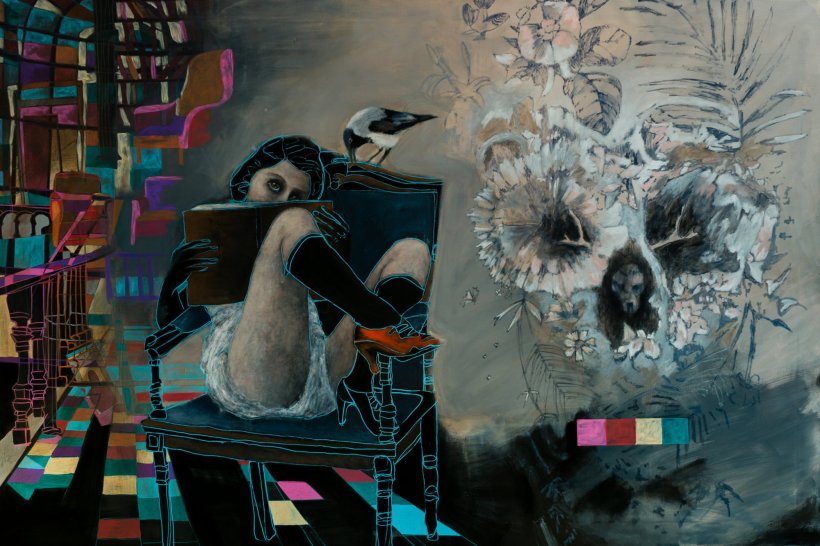
Artist & Exhibition: Ann Lisbeth Sanvig
Where: Galleri Bergman, Sturegatan 32
When: Till 18 March
Referring to the art historical genre Vanitas and particularly of its vanity and the impermanence of life, Denmark-based Ann Lisbeth Sanvig uses symbolic references and ambiguities in her artwork to express that life is not always what it seems.
Drawing frequent inspiration from vintage photos of women in piquancy postures, her work emphasizes that though these pictures seem more innocent compared to contemporary depictions today, the issues have remained unchanged, by putting the snapshots of a past era in another context and combining them with subtle details of odd or eccentric and humorist elements.
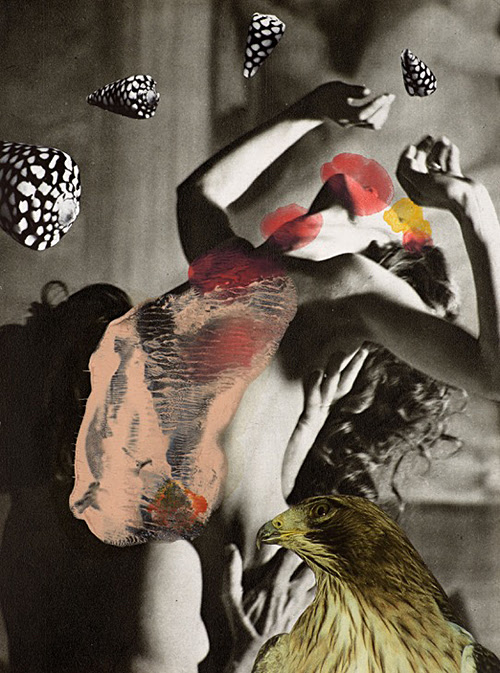
Artist & Exhibition: Linder
Where: Andréhn-Schiptjenko, Hudiksvallsgatan 8
When: 9 March to 22 April
As an internationally celebrated Liverpool-born artist who applies the principles of collage to the visual languages of graphic design, popular culture, fashion and fine art in the production of photomontages, performances and installations, Linder’s work is a continuous exploration of desire, cultural expectations and the female body as commodity. Her collages are biopsies that manipulate, disrupt and play with porn and glamour to examine the way women are depicted across visual culture; exposing these as institutionalised misogyny and hence, something we should be wary of.
Denouncing the artificiality of groomed and tame femininity while revealing the performative aspects of gendered and social differences, the works montaged with images from pornographic magazines and those on interior design and fashion are sometimes provocative – and also funny. Hence, her depiction of the female body is often forensic in its approach, a visual enquiry into who, what, where, why and how the images that we see around us have been constructed.
The exhibition will also include work that connects with Linder’s formerly successful musical career in Manchester in the mid 1970s; like photographs initially produced for a fanzine released with her 1978-formed post-punk band Ludus’s cassette and badge in 1981 as well as large scale light box work featuring the iconic iron-headed woman from the 1977 Buzzcocks’ single “Orgasm Addict”.
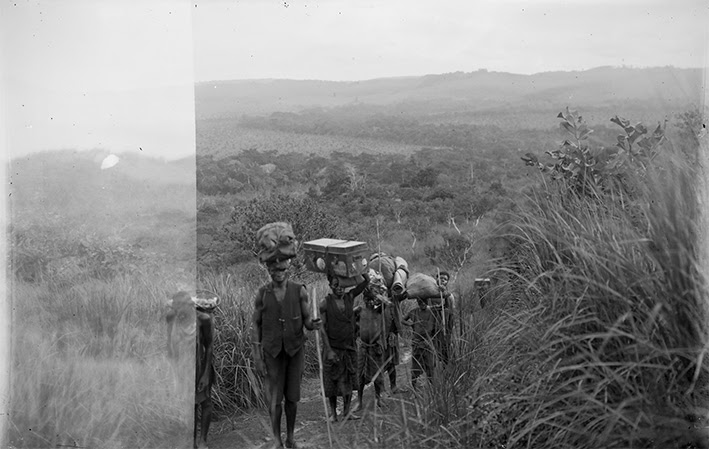
Artists: Anna Ekman, Cecilia Järdemar & Freddy Tsimba
Exhibition: L’archive suédoise – Part 1
Where: CFF – Centre for Photography, Tjärhovsgatan 44
When: 9 March to 2 April
A project initiated by the Sweden-based Anna Ekman and Cecilia Järdemar, their collaboration with Congolese sculptor Freddy Tsimba examines the alternative readings of history that may occur by creating new work with the archive of glass plate negatives from the Swedish Mission Covenant mission fields in the Congo in 1890 to 1930 as the starting point.
With Sweden as one of the largest players in place back then, the opening of the Missionsfältens coincided with the emergence of photography; creating opportunity to meet, gather and construct a world that soon became inextricably linked with colonialism and missionary activity, and of photographic documentation as an important medium to convey the message of the mission to hemförsamlingarna who funded the business with images touring Sweden in the form of lectures and mobile museums in schools, churches and other public places well into the 1960s.
Ekman and Järdemar have borrowed glass negatives from the Swedish Mission Church, and from the heirs of the missionaries, selecting images that have not been exhibited before to showcase the hidden parts of both Sweden and Congo’s history; of missionaries documenting existing cultures in the places where they have settled before changing or destroying them as part of the Christianization of society.
How can we confront this type of images today, from a Swedish perspective and from a Congolese one? How can historic images find a new context and new interpretations, outside the unequal power structures that prevailed when they were added?
In the new contemporary artistic omtolkningarna, photographs can challenge and a space for dialogue and openness created.
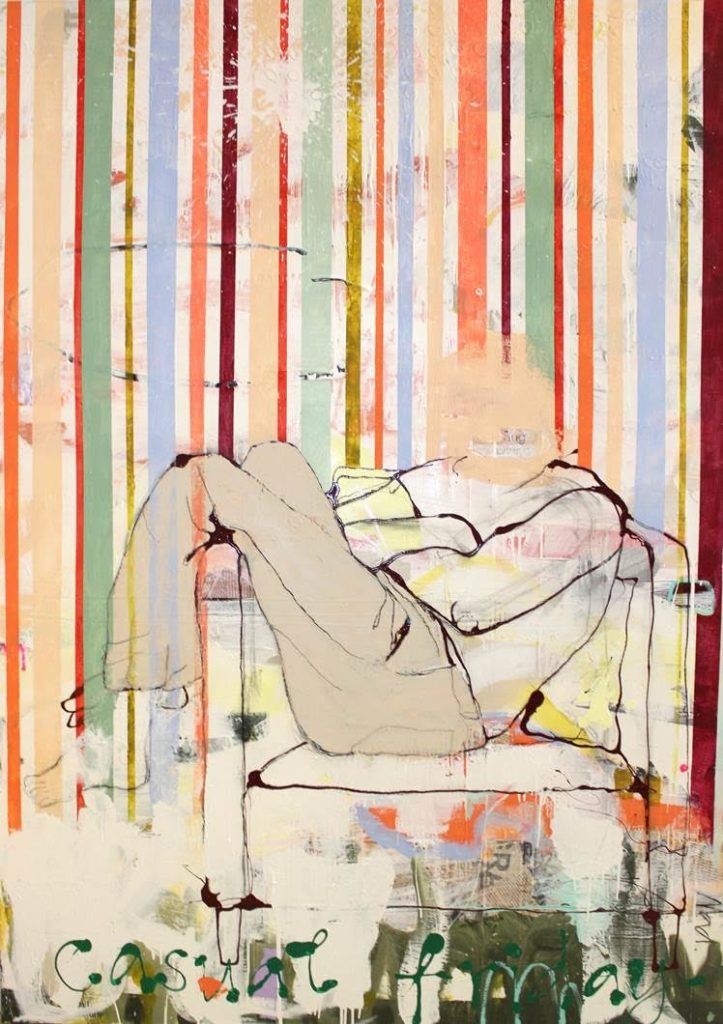
Artist & Exhibition: Moja Adlersson
Where: Galleri Eklund, Karlavägen 15
When: 11 March to 1 April
Stockholm-based Moja Adlersson works spontaneously and intuitively – often with the canvas lying on the floor; painting pleasingly colorful large-format works in mixed media – mixing among many mediums acrylic, oil, coal, paper and gouache.
Her motifs have an abstract base but often with figurative elements. Hence, each painting is a story; reflecting the everyday objects she surrounds herself with or the people inhabiting her vivid imagination.

Artist: Elisabeth Henriksson
Exhibition: Structures – Pictures in glass
Where: Konsthantverkarna, Södermalmstorg 4
When: 11 to 29 March
Elisabeth Henriksson returns often to repeat simple elements; combining small parts together to build larger entities.
Her first exhibition at Konsthantverkarna is of works with images in glass; examining transparency versus density within closed or open rooms – exploring how small glass elements in thin paint layers come together and reinforce each other, and how light affects the experience of the large flat glass surfaces.
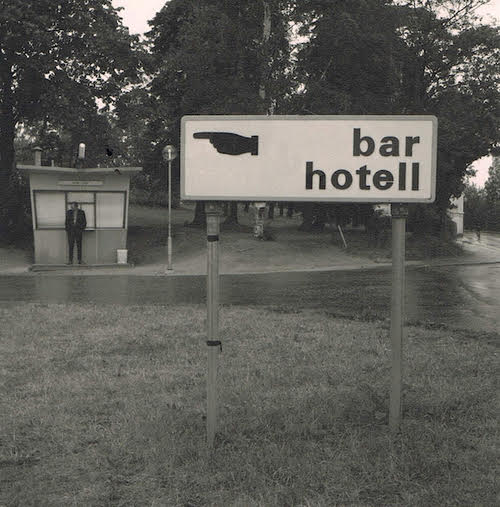
Artist: Gunnar Smoliansky
Exhibition: Strollers
Where: FORUM, Sigtunagatan 14
When: Till 12 April
A unique anthology of photographs on communication between people in the selection of Kim Klein, the exhibition extends renowned photographer Gunnar Smoliansky’s previous show “One Picture At A Time” at Kulturhuset in Stockholm. With a focus on a unique theme arising from his imagery of sometimes almost invisible yet highly sweeping messages people leave behind in public places in towns and the countryside, it showcases his artistic process of walking around with an open mind as the basis for brilliant virtuoso camera and darkroom work.
What distinguishes the casual browser from most of his fellow men is his ability to extract meaning from things that are not necessarily arranged in the subtle way they tend to be in our own time; resulting in a photographic alchemy that reveals to us how everyday substances can be transformed into the noblest of metals.
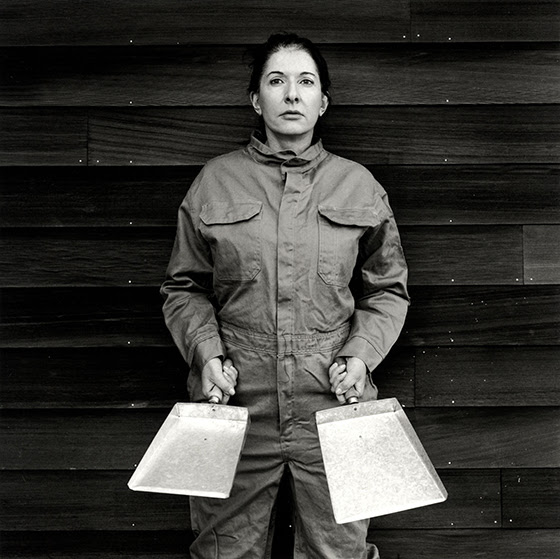
Artist: Marina Abramović
Exhibition: The Cleaner
Where: Moderna Museet, Exercisplan 4, Skeppsholmen
When: Till 21 May
Working with presence and her own body as her primary artistic media for more than four decades has made Belgrade-born Marina Abramović one of the most widely acknowledged artists of our time. With her uncompromising self-exposure evoking criticism and praise in equal measure, “The Cleaner” features more than 120 early paintings and works on paper from the 1960s; and live re-performances, films, installations, photographs and audio works from the 1970s to the current day; presenting several of her best-known performances, including the Relation Works with German artist Ulay, her collaborator and partner from 1976 to1988.
“Marina Abramović expands the given boundaries, in terms of scale, medium and the relationship to the audience. The responsibility shared by the artist and the participants for what the work can evolve into permeates her entire oeuvre,” says Lena Essling, the exhibition’s curator.
With Marina Abramović’s partisan parents acknowledged as national heroes under Marshal Tito’s regime, and with being raised by her orthodox grandmother, religion and revolution impacted profoundly on her early life and continue to permeate her artistic practice. In “Rhythm 5” (1974/2011) she sets fire to a communist star that can also be read as a pentagram when inverted. The video installation “The Hero” (2001) is a ritualistic elegy for her father.
Her works thus seek concepts of loss, memory, being, pain, endurance and trust in matters of life and death; insightfully exploring the physical and mental pain thresholds, and questioning existence and art in ways that both provoke and move us. So in “The Lovers” (1988) Abramović and Ulay undertook a 90-day walk from opposite ends of the Great Wall of China, with their meeting halfway marking the end of their love affair and of more than ten years of partnership.
Photo and information credits: The respective galleries and/or artists
